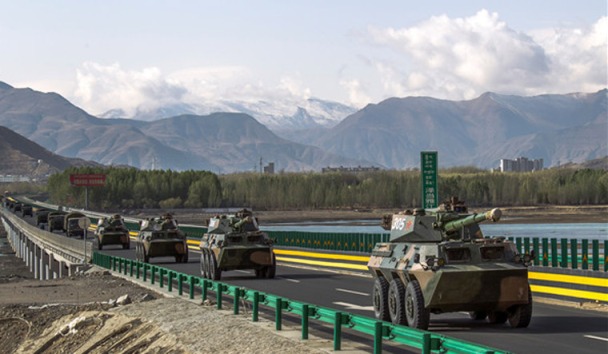24th June 20. A day after a marathon, 11-hour border meeting between senior military commanders of India and China, Beijing has welcomed an agreement to “cool down the situation.”
It said it would continue holding talks “for peace and tranquility” along the Line of Actual Control (LAC).
Describing the meeting, which took place exactly a week after a brutal clash that left 20 Indian soldiers dead and dozens more injured, China’s ministry of foreign affairs (MFA) spokesperson said: “This meeting showed that the two sides wish to control and alleviate the situation through dialogue and consultation.”
Beijing flatly rejected the contention of union minister General VK Singh (Retired) that more than 40 Chinese soldiers had been killed in the Ladakh face-off. “I can tell you for sure this is fake news,” said the MFA spokesperson.
Accompanying Beijing’s talk of “dialogue and consultation”, however, is a massive Chinese troop buildup along the border in Ladakh. Since the June 15 clash, the People’s Liberation Army (PLA) has inducted large numbers of troops, armoured vehicles and artillery all along the LAC – from Depsang and Galwan in northern Ladakh; to Hot Springs, Pangong Tso and Chushul in central Ladakh, to Demchok and Chumar in southern Ladakh, said a well informed government source.
The Chinese buildup is especially heavy at Demchok and Chumar, where large numbers of ground troops, artillery guns and air defence batteries have been deployed on the Chinese side of the LAC.
Indian planners assess the Chinese have stepped up their forces by at least 30 per cent since June 15, along the Ladakh frontier.
In northern Ladakh, the PLA has activated the Depsang Area, north of Galwan, where both sides had faced off earlier in 2013. Indian patrols have traditionally patrolled here up to Patrolling Point (PP) 10, 11, 12 and 13. Now they are being stopped by the Chinese, who have built tracks bypassing these PPs and extending 15-17 kilometres (km) into Indian-claimed territory.
This includes advancing deeper into Indian territory at Jeevan Nullah (PP13) and on-going attempts to cross the so-called Bottleneck area on Raki Nullah (PP12).
In the Galwan Valley, the Chinese have established a camp about one km inside the Indian side (west) of the LAC near PP14, where the June 15 clash occurred. Indian patrols go up to a few hundred metres of these camps and then return to their bases at the Galwan estuary – where the river flows into the Shyok.
The Indian Army currently has no camps or posts in the Galwan River valley, with both sides having agreed to demilitarize the valley. Controversially, India has agreed to a 5-7 km deep “no-man’s land” on the Indian side of the LAC.
While Indian troops are patrolling close to PP14, Chinese patrols are visiting the heights along the Galwan River, especially those closer to the LAC.
Meanwhile, at PP15, which is about 25 km south of PP14, the Chinese have entered about two km inside the Indian side of the LAC and have constructed two tracks on Indian-claimed territory, say sources.
While there is no Chinese ingress at PP16, there confrontation continues in the Hot Springs sector, which includes PP17 (called the Gogra Heights), PP18 and PP19 (called Kongka La).
Further south, the Chinese are strengthening their defensive positions on the north bank of the Pangong Tso, having ingressed eight km from the Finger 8 area to Finger 4.
Indian planners therefore face the worrisome prospect of a dual threat to northern Ladakh. The Chinese move towards the Galwan-Shyok river junction is a pressure point for the Darbuk-Shyok-Daulat Beg Oldi (DSDBO) road, while the PLA’s advance into the Depsang Plain at the Jeevan Nullah and Raki Nullah could choke India’s access to Karakoram Pass at two more points.


















